Supertest: German Tier X Aircraft Carrier Manfred Von Richthofen
10 min readLadies and Gentlemen, here we are! The tier X of the upcoming German aircraft carriers line and perhaps the weirdest ship Wargaming ever created (Venezia is also a good competitor for that title though).
The Manfred Von Richthofen is a what-if ship representing what could have possibly been the conversion of an H-class battleship into a fleet carrier. For the hull, they used the one of the Friedrich Der Große, making the Manfred Von Richtofen the second smallest carrier at tier X.

The thing with this conversion is that there are quite a few issues. The AA armament is terribly organized with only 3 twin 55 mm AA mounts on each sides while just on the bow, there are 4 of them. There is also the problem of having the superstructure on both sides of the ship which was proved well before World War II to be a bad design, creating turbulence.
Both on the bow and the stern, there is a lot of wasted space, limiting the hangar space of the ship. Finally, the bow isn’t enclosed or at least raised which should be a thing for a ship that would have logically served in the Atlantic. Compared to the Parseval, the Richthofen is almost a downgrade when it comes to the design itself.
Just like the rest of the German carriers, we have no idea about the penetration capacity of the AP bombs and rockets and the secondaries have the standard dispersion formula.
As of now, the German Aircraft carriers concept offers the following peculiarities:
Airplanes have comparatively high cruise speed, but their HP pool is below average;
Attack aircraft use armor-piercing rockets. These rockets can deal high damage by hitting an enemy ship’s citadel, but they allow a familiar counterplay: when they hit at an acute angle, they can ricochet or simply not penetrate the armor. Rockets fired at broadsided destroyers –with their thin armor– will result in overpenetrations that deal 10% of the maximum damage. Armor-piercing rockets can also ricochet against destroyers’ end armor when the ship is bow-in to the planes. Therefore, a player’s reaction against such rockets should be similar to the actions one would take against armor-piercing shells.
Bombers use armor-piercing bombs. Unlike the Japanese bombers, German ones dive immediately, without the prior altitude gain. Their drop zone is shaped like an elongated ellipse, and aiming it during an attack may be difficult. These bombs will be most effective against slower opponents.
The final shape of torpedo bomber’s launching cone is similar to that of Japanese and American torpedo bombers. The torpedoes have a range of 6 km.
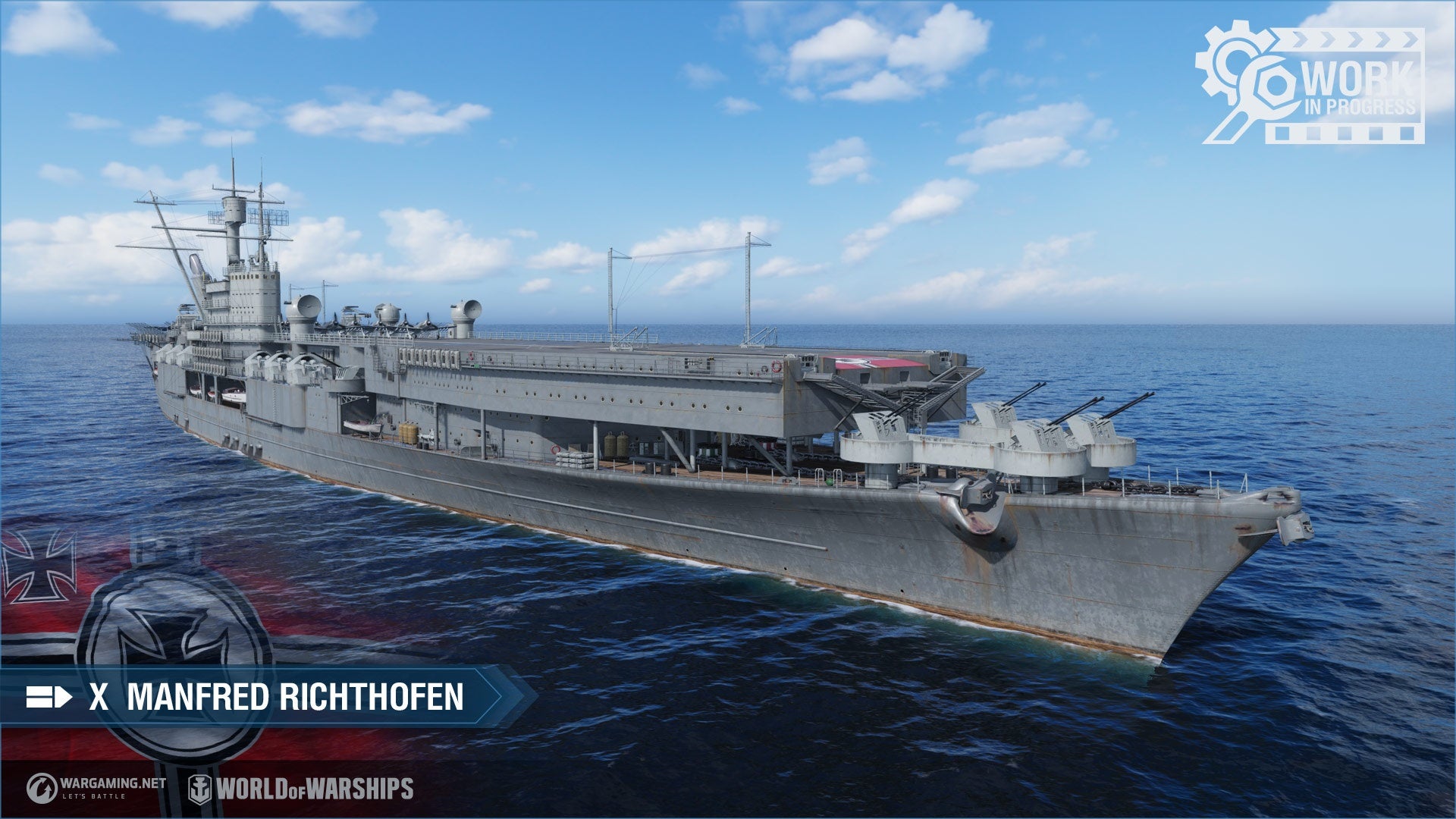
As usual, I will cover both the stock and the fully upgraded versions of the ship. Remember, everything that you will see here is, of course, a work in progress.
![]()
Hull | Engine | Torpedo bomber | Dive Bomber | Attack Aircraft |
Manfred Von Richthofen (A) |
Propulsion: 183 600 HP |  Fw 190G8 |  Fw 190G8 |  Fw 190A8 |
 Ta 152C-1/R14 |  Ta 152C-1/R14 |  Me 155G |
A Hull
| Tier | X |
| Health | 65 300 HP |
| Displacement | 52 720 tons |
| Aircraft on deck | |
| Attack Aircrafts | 14 |
| Torpedo Bombers | 14 |
| Dive Bombers | 18 |
| Secondary Armament | |
| Maximum Firing Range | 7.20 km |
| 105 mm L/65 Dop. L. C/38 | 12 x 2 105 mm |
| Anti Air Defense | |
| 105 mm L/65 Dop. L. C/38 | 12 x 2 105 mm |
| 55 mm L/77 Gerät 58 Zwilling | 12 x 2 55 mm |
| Maximum speed | 32 knots |
| Turning Circle Radius | 1 200 m |
| Rudder Shift Time | 16.4 s |
| Surface Detectability | 14.0 km |
| Air Detectability | 14.2 km |
Attack aircraft – Fw 190A8 | |
| Tier | IX |
| Hit points per plane | 1 380 |
| Cruise speed | 167 knots |
| Maximum speed | 207 knots |
| Engine boost time | 5 s |
| Engine boost reload time | 10 s |
| Size of attacking flight | 3 |
| Aircraft per squadron | 9 |
| Rocket type | Wfr. Gr. 21 |
| Rocket caliber | 203 mm |
| Rockets per plane | 2 |
| Maximum rocket damage | 5 000 |
| Projectile speed | 520 m/s |
| Air Drag | 0.35 |
| Projectile mass | 111 kg |
| Projectile Krupp | 2 350 |
| Projectile detonator | 0.022 s |
| Detonator threshold | 35 mm |
| Detectability range | 10.0 km |
| Aircraft restoration time | 74 s |
| Aircraft on deck | 14 |
Slot 1 | Slot 1 |
Engine Cooling  Number of Charges: 3 Work time: 10 s Cooldown: 80 s | Patrol fighter  Number of Charges: 3 Work time: 60 s Cooldown: 10 s Aircraft per squadron: 7 Patrol radius: 3.5 km |
Torpedo bomber – Fw 190G8 | |
| Tier | IX |
| Hit points per plane | 1 640 |
| Cruise speed | 154 knots |
| Maximum speed | 194 knots |
| Engine boost time | 20 s |
| Engine boost reload time | 40 s |
| Size of attacking flight | 3 |
| Aircraft per squadron | 9 |
| Torpedo type | BT 1000 |
| Torpedoes per plane | 1 |
| Maximum torpedo damage | 10 200 |
| Maximum torpedo range | 6.0 km |
| Torpedo speed | 25 knots |
| Torpedo arming distance | 671 m |
| Flooding chance | 86% |
| Detectability range | 10.0 km |
| Aircraft restoration time | 89 s |
| Aircraft on deck | 14 |
Slot 1 | Slot 2 | Slot 3 |
Engine Cooling  Number of Charges: 3 Work time: 10 s Cooldown: 80 s | Patrol fighter  Number of Charges: 3 Work time: 60 s Cooldown: 10 s Aircraft per squadron: 7 Patrol radius: 3.5 km | Repair  Number of Charges: 3 Work time: 5 s Cooldown: 180 s HP regeneration speed: +10%/s |
Dive bomber – Fw 190G8 | |
| Tier | IX |
| Hit points per plane | 1 470 |
| Cruise speed | 154 knots |
| Maximum speed | 194 knots |
| Engine boost time | 20 s |
| Engine boost reload time | 40 s |
| Size of attacking flight | 3 |
| Aircraft per squadron | 12 |
| Bomb type | SC 1000 |
| Bomb caliber | 406 mm |
| Bomb per plane | 1 |
| Maximum bomb damage | 6 100 |
| Projectile speed | 470 m/s |
| Air Drag | 0.35 |
| Projectile mass | 500 kg |
| Projectile Krupp | 2 750 |
| Projectile detonator | 0.03 s |
| Detonator Threshold | 30 mm |
| Detectability range | 10.0 km |
| Aircraft restoration time | 68 s |
| Aircraft on deck | 18 |
Slot 1 | Slot 2 | Slot 3 |
Engine Cooling  Number of Charges: 3 Work time: 10 s Cooldown: 80 s | Patrol fighter  Number of Charges: 3 Work time: 60 s Cooldown: 10 s Aircraft per squadron: 7 Patrol radius: 3.5 km | Repair  Number of Charges: 3 Work time: 5 s Cooldown: 180 s HP regeneration speed: +10%/s |
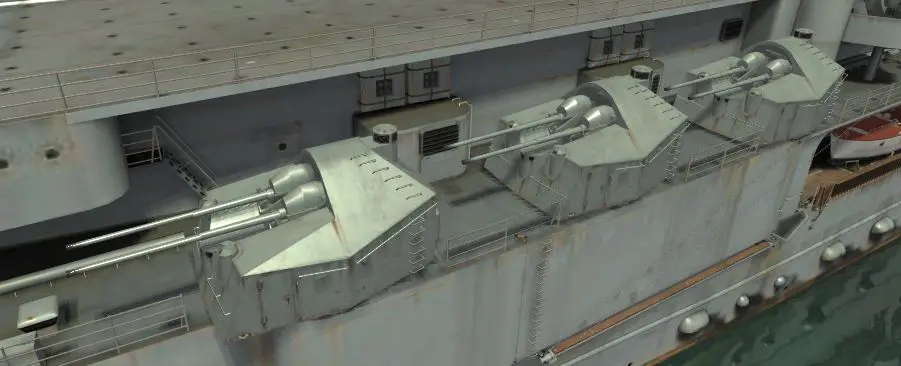
| 12 x 2 105 mm L/65 Dop. L. C/38 | |
| Maximum Firing Range | 7.200 km |
| Reloading Time | 3.35 s |
| Sigma | 1.00 sigma |
| Shells | |
| Type of Projectile | HE – 105 mm Spr.Gr. Kz. |
| Alpha Damage | 1 200 HP |
| Damage | 330 HP |
| HE penetration | 26 mm |
| Explosion Size | 0.31 |
| Chance to Cause Fire | 5 % |
| Projectile Speed | 900 m/s |
| Air Drag | 0.33 |
| Projectile Mass | 15.1 kg |
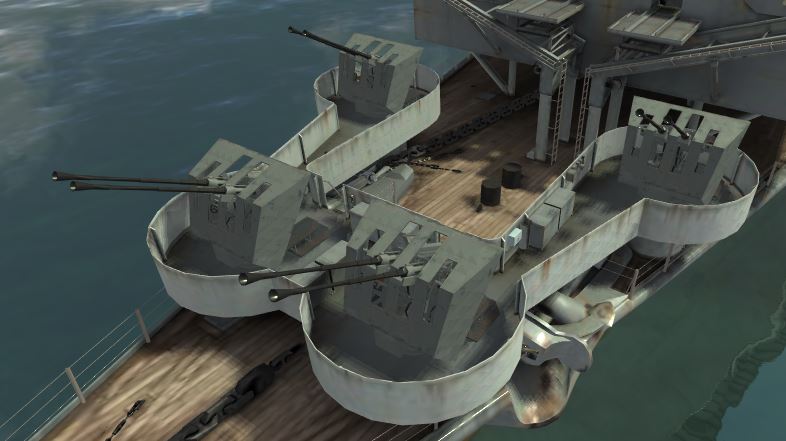
| 12 x 2 105 mm L/65 Dop. L. C/38 | |
| Sector range | 0.1 km – 5.2 km |
| Hit chance | 100 % |
| Sector’s damage | 64 |
| Sector’s damage frequency | 0.29 s |
| Sector’s damage per second | 224 |
| Flak clouds number | 9 |
| Flak cloud damage | 1 540 |
| 12 x 2 55 mm L/77 Gerät 58 Zwilling | |
| Sector range | 0.1 km – 4.0 km |
| Hit chance | 100 % |
| Sector’s damage | 135 |
| Sector’s damage frequency | 0.29 s |
| Sector’s damage per second | 473 |
Slot 1 | Slot 2 |
Damage Control Party Work time: 60 s Cooldown: 90 s | Fighter Number of charges: 4 Work time: 600 s Cooldown: 40 s Patrol Radius: 3.0 km Planes in a squadron: 4 |
B Hull
| Tier | X |
| Health | 65 300 HP |
| Displacement | 52 720 tons |
| Aircraft on deck | |
| Attack Aircrafts | 14 |
| Torpedo Bombers | 14 |
| Dive Bombers | 18 |
| Secondary Armament | |
| Maximum Firing Range | 7.20 km |
| 105 mm L/65 Dop. L. C/38 | 6 x 2 105 mm |
| Anti Air Defense | |
| 105 mm L/65 Dop. L. C/38 | 12 x 2 105 mm |
| 55 mm L/77 Gerät 58 Zwilling | 12 x 2 55 mm |
| Maximum speed | 32 knots |
| Turning Circle Radius | 1 200 m |
| Rudder Shift Time | 16.4 s |
| Surface Detectability | 14.0 km |
| Air Detectability | 14.2 km |
Attack aircraft – Me 155G | |
| Tier | X |
| Hit points per plane | 1 440 |
| Cruise speed | 172 knots |
| Maximum speed | 212 knots |
| Engine boost time | 5 s |
| Engine boost reload time | 10 s |
| Size of attacking flight | 3 |
| Aircraft per squadron | 9 |
| Rocket type | Wfr. Gr. 21 |
| Rocket caliber | 203 mm |
| Rockets per plane | 2 |
| Maximum rocket damage | 5 000 |
| Projectile speed | 520 m/s |
| Air Drag | 0.35 |
| Projectile mass | 111 kg |
| Projectile Krupp | 2 350 |
| Projectile detonator | 0.022 s |
| Detonator threshold | 35 mm |
| Detectability range | 10.0 km |
| Aircraft restoration time | 82 s |
| Aircraft on deck | 14 |
Slot 1 | Slot 1 |
Engine Cooling  Number of Charges: 3 Work time: 10 s Cooldown: 80 s | Patrol fighter  Number of Charges: 3 Work time: 60 s Cooldown: 10 s Aircraft per squadron: 7 Patrol radius: 3.5 km |
Torpedo bomber – Ta 152C-1/R14 | |
| Tier | X |
| Hit points per plane | 1 710 |
| Cruise speed | 174 knots |
| Maximum speed | 214 knots |
| Engine boost time | 20 s |
| Engine boost reload time | 40 s |
| Size of attacking flight | 3 |
| Aircraft per squadron | 9 |
| Torpedo type | BT 1000 |
| Torpedoes per plane | 1 |
| Maximum torpedo damage | 10 200 |
| Maximum torpedo range | 6.0 km |
| Torpedo speed | 25 knots |
| Torpedo arming distance | 738 m |
| Flooding chance | 86% |
| Detectability range | 10.0 km |
| Aircraft restoration time | 99 s |
| Aircraft on deck | 14 |
Slot 1 | Slot 2 | Slot 3 |
Engine Cooling  Number of Charges: 3 Work time: 10 s Cooldown: 80 s | Patrol fighter  Number of Charges: 3 Work time: 60 s Cooldown: 10 s Aircraft per squadron: 7 Patrol radius: 3.5 km | Repair  Number of Charges: 3 Work time: 5 s Cooldown: 180 s HP regeneration speed: +10%/s |
Dive bomber – Ta 152C-1/R14 | |
| Tier | X |
| Hit points per plane | 1 530 |
| Cruise speed | 174 knots |
| Maximum speed | 214 knots |
| Engine boost time | 20 s |
| Engine boost reload time | 40 s |
| Size of attacking flight | 3 |
| Aircraft per squadron | 12 |
| Bomb type | SC 1000 |
| Bomb caliber | 356 mm |
| Bomb per plane | 1 |
| Maximum bomb damage | 7 100 |
| Projectile speed | 480 m/s |
| Air Drag | 0.35 |
| Projectile mass | 539 kg |
| Projectile Krupp | 2 850 |
| Projectile detonator | 0.03 s |
| Detonator Threshold | 30 mm |
| Detectability range | 10.0 km |
| Aircraft restoration time | 76 s |
| Aircraft on deck | 18 |
Slot 1 | Slot 2 | Slot 3 |
Engine Cooling  Number of Charges: 3 Work time: 10 s Cooldown: 80 s | Patrol fighter  Number of Charges: 3 Work time: 60 s Cooldown: 10 s Aircraft per squadron: 7 Patrol radius: 3.5 km | Repair  Number of Charges: 3 Work time: 5 s Cooldown: 180 s HP regeneration speed: +10%/s |

| 12 x 2 105 mm L/65 Dop. L. C/38 | |
| Maximum Firing Range | 7.200 km |
| Reloading Time | 3.35 s |
| Sigma | 1.00 sigma |
| Shells | |
| Type of Projectile | HE – 105 mm Spr.Gr. Kz. |
| Alpha Damage | 1 200 HP |
| Damage | 330 HP |
| HE penetration | 26 mm |
| Explosion Size | 0.31 |
| Chance to Cause Fire | 5 % |
| Projectile Speed | 900 m/s |
| Air Drag | 0.33 |
| Projectile Mass | 15.1 kg |

| 12 x 2 105 mm L/65 Dop. L. C/38 | |
| Sector range | 0.1 km – 5.2 km |
| Hit chance | 100 % |
| Sector’s damage | 64 |
| Sector’s damage frequency | 0.29 s |
| Sector’s damage per second | 224 |
| Flak clouds number | 9 |
| Flak cloud damage | 1 540 |
| 12 x 2 55 mm L/77 Gerät 58 Zwilling | |
| Sector range | 0.1 km – 4.0 km |
| Hit chance | 100 % |
| Sector’s damage | 135 |
| Sector’s damage frequency | 0.29 s |
| Sector’s damage per second | 473 |
Slot 1 | Slot 2 |
Damage Control Party Work time: 60 s Cooldown: 90 s | Fighter Number of charges: 4 Work time: 600 s Cooldown: 40 s Patrol Radius: 3.0 km Planes in a squadron: 4 |
The armor

As you might expect, since the Manfred Von Richthofen is a converted battleship hull, this ship has a LOT of armor. Funnily enough though, she has the weakest armored flight deck at tier X.
Usual reminder: The armor view for carriers is mirrored on gamemodels3d.
The bow section
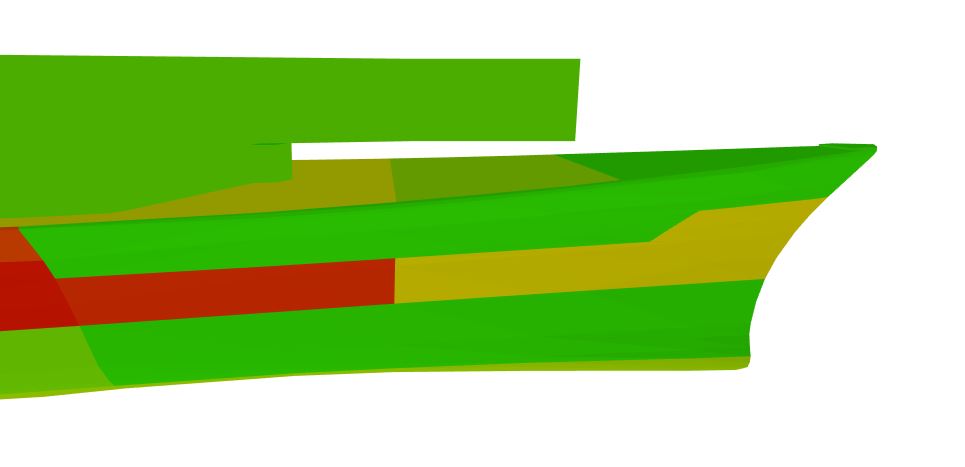
The bow is partially covered with 19 mm plating. For the rest, there is the extended belt of the Friedrich Der Große that goes all the way to the tip of the bow. It is first 150 mm thick and then it goes down to 60 mm thick. The deck of the bow also has additional protection with a 50 mm thick section and further at the front a 30 mm section.
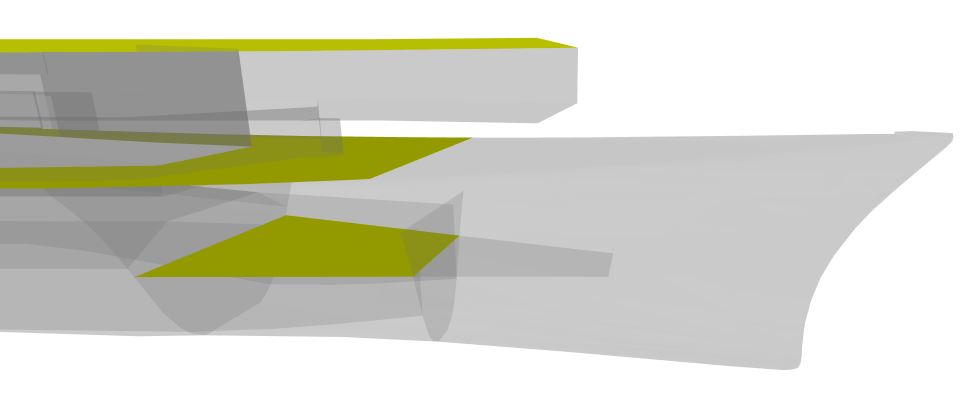
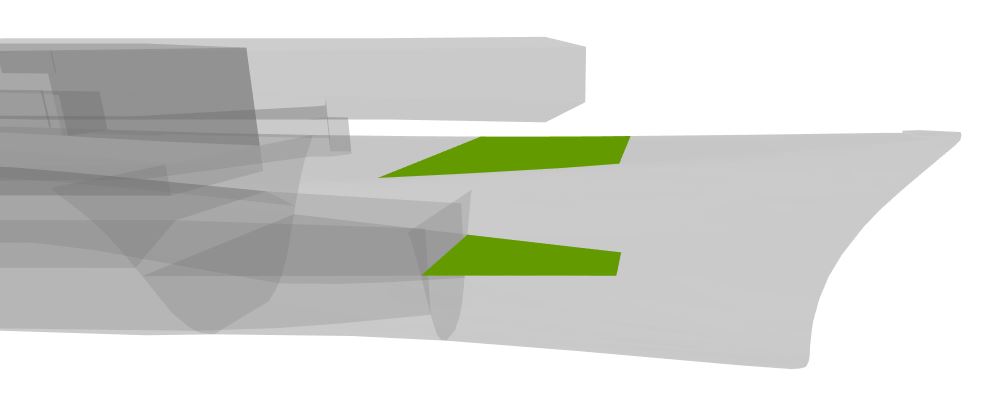
Inside the bow, there is, of course, an armored deck with the first part being 50 mm thick and the second part is 30 mm thick.

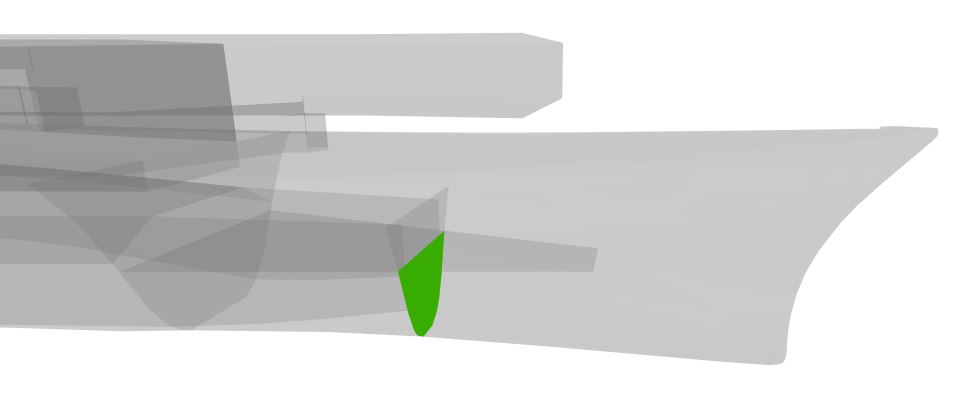
Passing through this armored deck, there is also a bulkhead in the middle of the bow. The upper part of this bulkhead is 100 mm thick while the lower part is 20 mm thick.
As you can see, a part of the casemate protecting the middle section is also 100 mm thick.
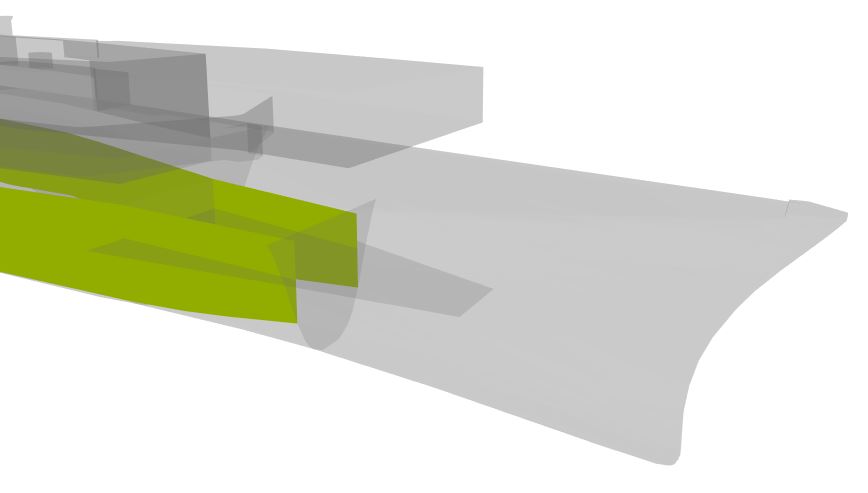
The 45 mm plating of the citadel also extends past the athwartship all the way to the bulkhead mentioned before.
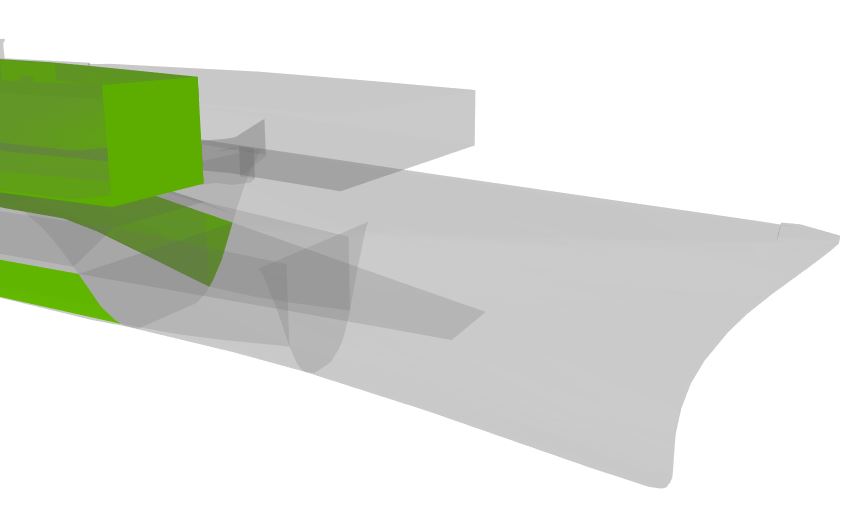
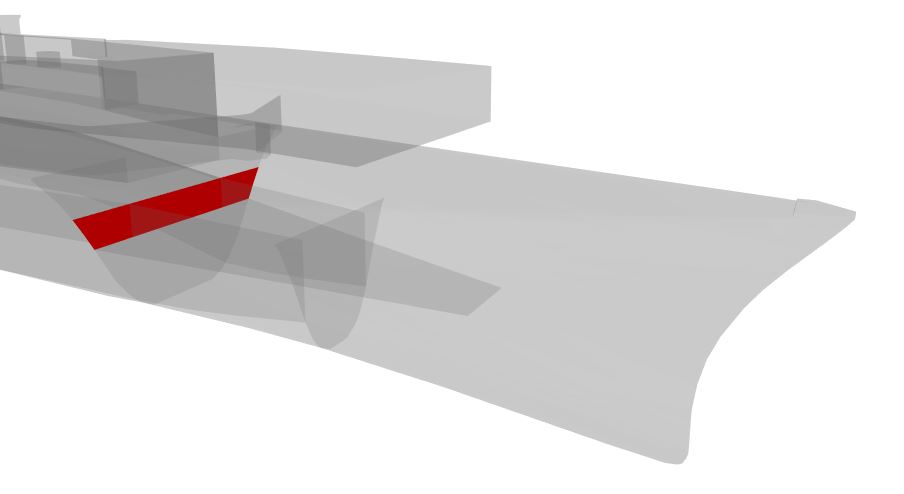
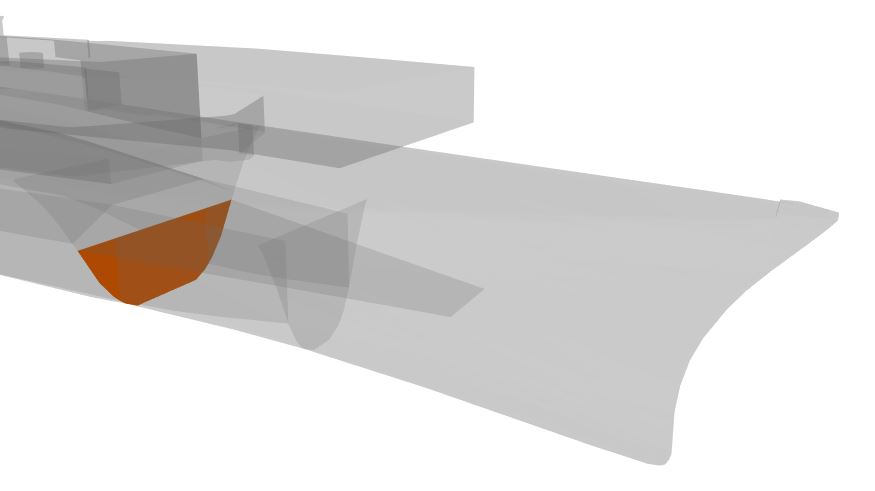
For the protection of the middle section, there is, first, the upper casemate with 25 mm of armor. Below that is the citadel athwartship and the bulkheads around it. They are 200 mm thick for the upper part and 125 mm thick for the lower part.
The middle section

For the middle section, the ship has an amazing armor protection, outclassing all the other tier X carriers, except for the flight deck.
Starting with the said flight deck, it is only 50 mm thick which means that supercruisers or Hindenburg’s HE shells for example will be able to penetrate it.
For the sides, the base hull has on the port side a 175 mm main belt and on the starboard side (the side where the superstructure is) a 150 mm main belt. Above this main belt, there is a 145 mm upper belt that goes up to what would have been the weather deck of the battleship hull. This deck is 50 mm thick for the exposed part.
For the structure added with the conversion into a carrier, the sides are for the most part protected with 21 mm of armor. There are, however 4 exceptions. Just under the secondary batteries, there are 2 casemates on each side with 150 mm of armor on the sides and 100 mm of armor at the top.
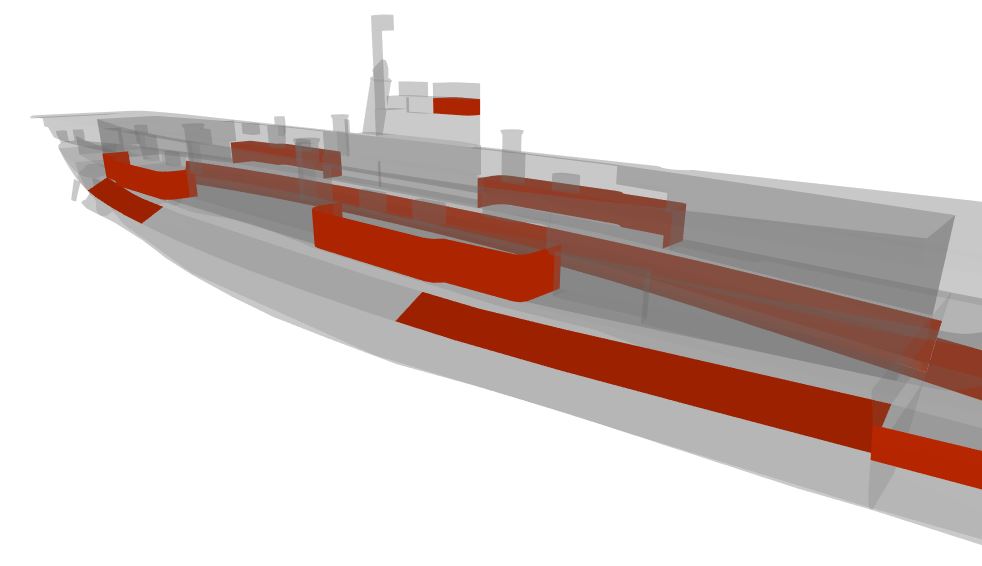

When it comes to the turtleback, it is 150 mm thick on the extremities and 120 mm thick around the engines with a slope varying between 58° and 62°.

This turtleback protects the citadel’s sides which are 45 mm thick.



When it comes to the horizontal protection there is, first, the 50 mm flight deck. After that, there is a thin 21 mm deck and right under it, the citadel deck. This citadel deck is 120 mm thick on the extremities and 100 mm thick above the engines.
Logically, with the 50 mm flight deck, the ship is protected against AP bombs since they will trigger on it.
The stern section

The stern is, just like the bow, partially covered with 19 mm of armor. On the sides, there is a 90 mm extended belt just reaching the steering gears. On the deck, there is, first, a 50 mm plating and after a 30 mm plating.
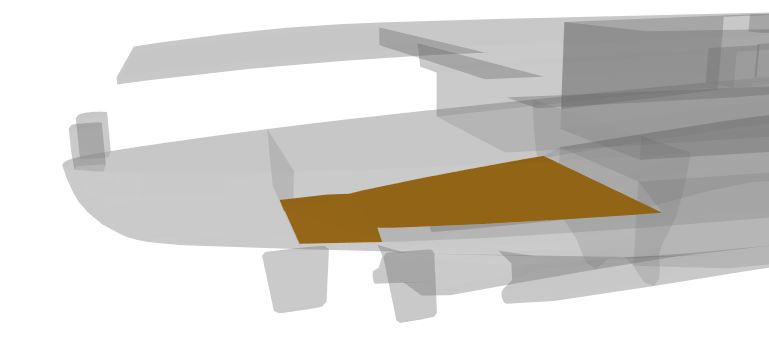
Inside the bow, the only relevant plating is a 110 mm thick armored deck that protects the lower part of the citadel’s athwartship.
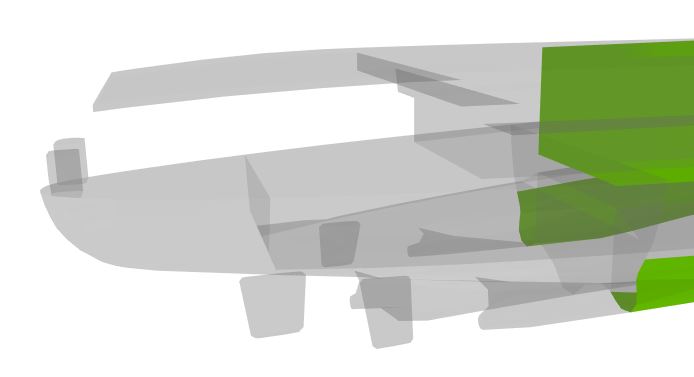
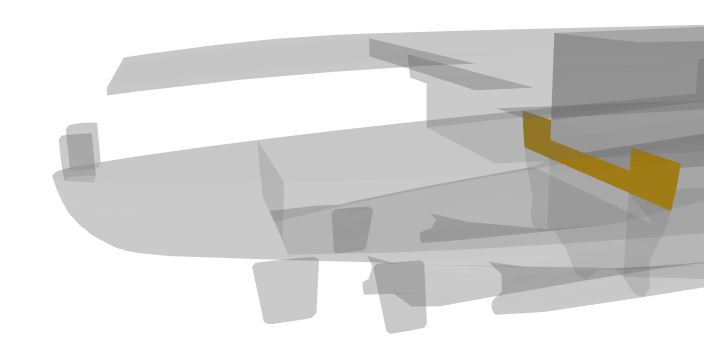
For the protection of the middle section, there is for the upper part a 25 mm casemate and just under a 100 mm bulkhead.
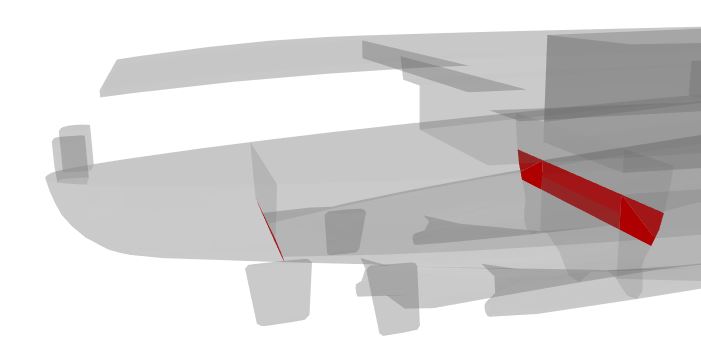
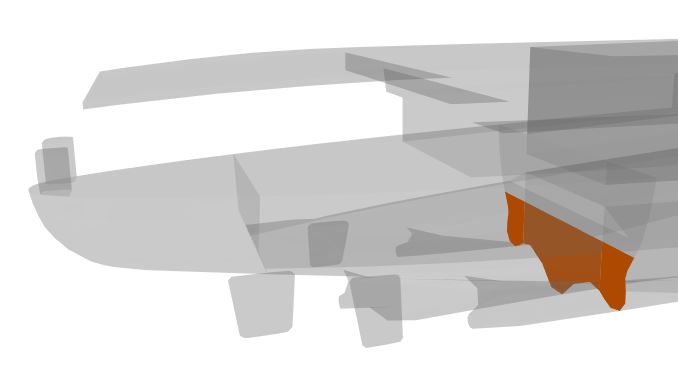
The citadel’s athwartships and the bulkheads around it are 220 mm thick for the upper part and 125 mm thick for the lower part.
The superstructure
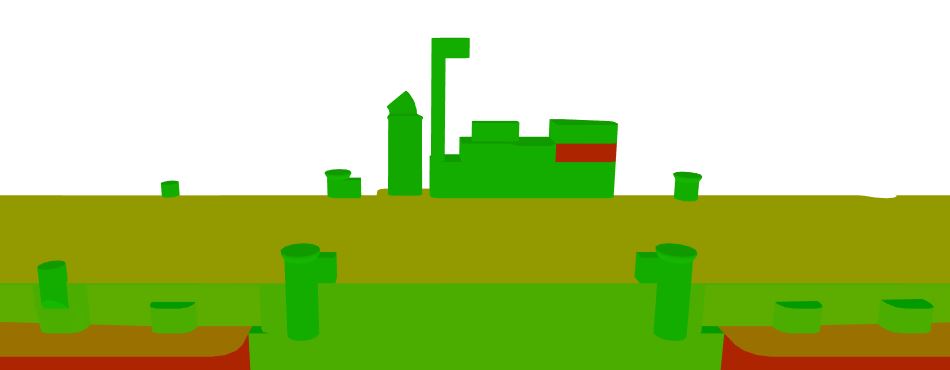
For the superstructure, the Manfred Von Richthofen is literally “How to not build a carrier”. There are raised structures on both sides of the flight deck which is only good at one thing, creating turbulence. Not a good thing when planes are trying to land or to take-off as you might guess.
This superstructure is 13 mm thick except for the 150 mm conning tower.
Personal opinion
While I wasn’t convinced about the August Von Parseval, the Manfred Von Richthofen already appears to be a bit more promising.
When comparing to the Hakuryu that has roughly similar characteristics, the planes are all faster, especially when looking at the torpedo bombers and dive bombers. They, however, lose in terms of HP pool with the torpedo bombers on the Hakuryu having on top of that the Japanese Repair consumables with a shorter cooldown. The dive bombers of the Richthofen do have their own Repair consumable to compensate though.
When it comes to the weapon loadouts, the rocket planes carry what already seem to be much more potent rockets than the previous ships since they have a caliber of 203 mm which should lead to a fairly good penetration power. The bombs also seem to be terribly strong when comparing to those of the Graf Zeppelin with a higher Krupp value, higher mass and higher projectile speed.
The big problem remains the torpedoes. While they have the highest damage per hit and highest flooding chance of all aerial torpedoes in the game, there is the problem of the slow speed combined with the long arming distance (bigger than Hakuryu’s torpedo bombers even with Aerial Torpedoes Modification 1). These torpedoes will be challenging to hit to say the least and might be limited to striking only battleships or stationary cruisers.







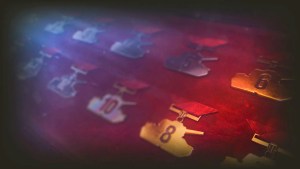


They copied some elements from hybrid battleship-carrier designs 1941-42 which also have both sides AA dome directors (but not high though) and wing 105mm/65 DP, relatively short flight deck, open bow but bow AA probably WG idea since hybrid have pretty **** AA stock for comparison, those 105mm/65 are place to close are my main concerns, is vulnerable against shellfire even hybrid designs doesn’t put them that close either, throw some IJN style rear flight stripe (and navigating wings) and whatever is, BOOM! Richthofen was born.
Cute little smoke stack, must have retain diesel generators like FDG.
once a gain they’re using High Al***ude Interceptor as a Torpedo and divebomber…. why
I think as a German, we would have used the Hull of the Großer Kurfürst, instead of the FDG. Well and due to the Efficiency, you dont go close with a carrier so torp belt and top deck would be very thick armored. Due to the big GK Hull they were more room for AA, the main thread to a carrier. To that, I mean look at Hitl ers Plans he wants every thing bigger… maybe also due to the technology contract between Japan and Germany, the hull could be modified, so that the GK Hull is more “Closed / Modern looking” like the Haku. I think Wargaming, has done this nerve to the carrier, because they are Russians, and these I mean we are talking about the German Nation and you name it.
Lets be hones between Design / Blueprints and manufacturing is a very very big gap, especially here in Germany. Lets take an example the main weapon of our army in the beginning the G3 (Gewehr 3/ Rifle 3 named after the 3rd Gen). The G1 and G2 also existied but never were used in the Army (G1 or G2 uses the Hull of the MG42. “Hitle r Buzzsaw”)
I was wondering about that funnel; seemed marginal for the engineering plant of such a ship.
really..? oh.. it so nc to heard about german Carrier.. I see the design in game just like this form..
Just want to raise a minor correction, the C variant of the Ta-152 was meant to be a low al***ude version with the “standard” Fw190 wings.
The High alt variant is the H version, and WG didnt use it so its a good start 😀